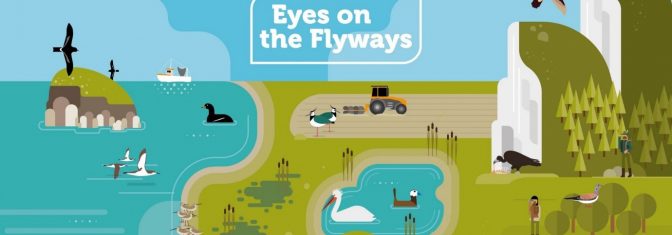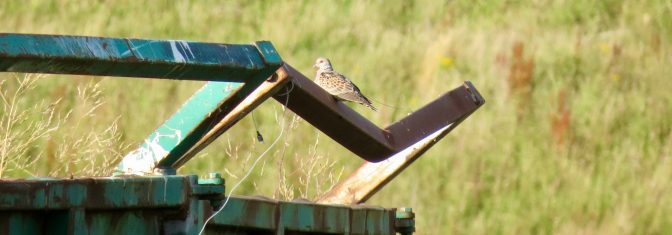In our series of inspirational Action Plan blogs, Tony Morris from RSPB highlights how research is a key component in the conservation toolkit for our work on turtle dove. I am Tony Morris, the Principal Research Manager at RSPB’s Centre for Conservation Science. Although my job is now largely desk-bound, once upon a time, not […]
Continue reading
Celebrating a new chapter for turtle dove conservation
On the day of the ‘Eyes on the Flyways’ conference where a suite of action plans, including the Turtle Dove Action Plan, will be celebrated, Carles Carboneras from the RSPB reflects on the work that has gone into making the Action Plan for turtle doves a reality and highlights the next important steps. My name […]
Continue readingUnifying our voices for bird conservation
On World Migratory Bird Day, Anna Staneva from BirdLife International tells us about an exciting project that is uniting voices across the African-Eurasian flyways to save iconic species like the turtle dove. The theme of this spring’s World Migratory Bird Day is ‘Uniting our voices for bird conservation’. This message of international collaboration is exemplified […]
Continue readingThe Art of Migration – When Turtle Doves Fly
Raising awareness about the plight of turtle doves can be difficult, it is a bird that most people don’t see anymore. Turtle doves now feature most in difficult conversations; agri-environment farm options; the new Species Action Plan which is launched later this month and of course rare bird notifications. Despite the fact that the numbers […]
Continue readingPonds for turtle doves
British farmland birds have experienced a population decline of 56% since 1970, with some species such as Turtle Dove and Tree Sparrow decreasing by over 90%. The intensification of agriculture and associated reductions of food availability and suitable nesting habitat is known to be one of the main drivers of these population crashes. One key […]
Continue readingWorking together for turtle doves – the launch of a Turtle Dove Friendly Zone
Turtle doves are declining at an alarming rate, and we know that one of the best ways we can help them is by ensuring that they have the seed food that they need, as well as nesting habitat and access to water on their breeding grounds. To do this at a large enough scale, we […]
Continue readingAll the evidence points to turtle doves still being in real trouble in the UK
We know that turtle doves are in trouble. That is why Operation Turtle Dove work so hard with others to try and reverse the fortunes of this amazing bird. So when a recent scientific paper published in British Birds in September identified turtle doves as “Critically Endangered” in the UK, owing to their strong population […]
Continue readingPhotographing the RSPB Titchwell Turtle Doves
As the weather gets steadily colder, and the turtle doves that breed in the UK are all heading back south for warmer climes, Les Bunyan tells us about his summer spent photographing these fantastic birds, and his hopes that they return next year. “I’m lucky enough to be a volunteer at Titchwell and can be […]
Continue reading
Jonny Rankin’s Dove Step date with Angela & RSPB scientists
On the 14th July I spent a day in the field with RSPB scientists tracking a satellite tagged Turtle Dove 161002, also known as Angela. Angela was one of ten Turtle Doves satellite tagged in 2016, but the only one still transmitting by the summer of 2017. Bird 161005, named Lawford, after its favoured village […]
Continue readingFlying Start – new hope for the Turtle dove
Joscelyne Ashpole from RSPB explains why there is new hope for the turtle dove across its migratory flyways. In ancient Greek mythology, the European Turtle-dove Streptopelia turtur was purported to be sacred to Demeter, goddess of the harvest and agriculture. As a species of cultivated areas and woodland, the Turtle-dove would have been a familiar farmland sight […]
Continue reading



